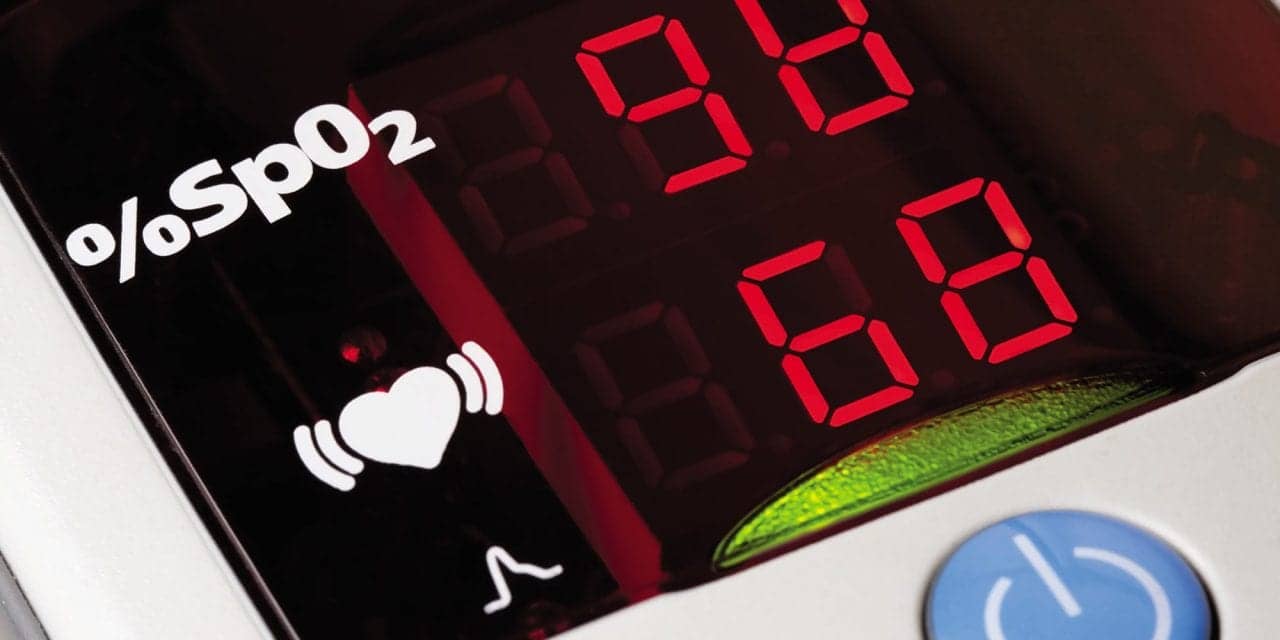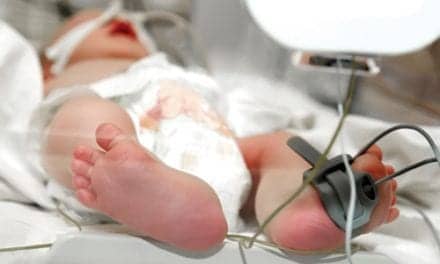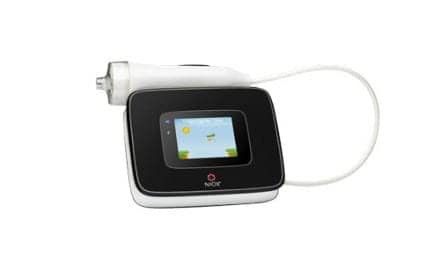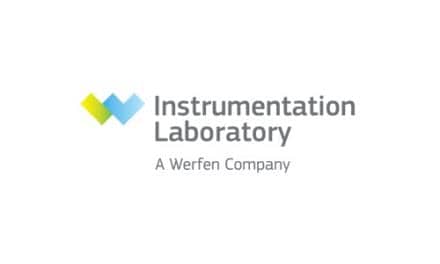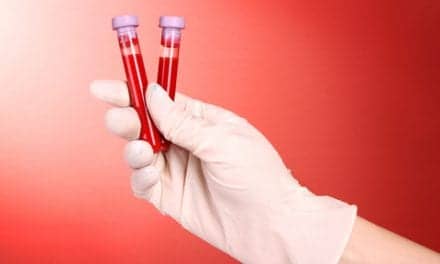The increased use of pulse oximetry has positioned it as a standard of care within numerous healthcare venues.
By Danielle Cohen
While pulse oximetry has been in the healthcare marketplace for decades, its increased use in almost all aspects of health care has earned it the distinction of “the fifth vital sign,” along with blood pressure, heart rate, temperature, and respiration rate.
Originally used by anesthesiologists to monitor patients, oximeters monitored oxygen saturation via the ear when they first came onto the market. The second generation of oximetry devices used patients’ fingers to assess arterial blood oxygen saturation by shining red and infrared lights into the skin and measuring the ratio of the re-emitted pulsing light intensities.
Early analog oximeters were eventually replaced by digital versions. As technology and software advanced, microprocessors became the operating force of many pulse oximeters.
Pulse oximetry has become a standard of care in virtually all aspects of health care, as well as nonmedical and veterinary uses. It provides an early indication of many problems, including inadequate oxygen supply, anesthetic overdose, and compromised respiration, including when patients are intubated or on a ventilator, or when they have chronic obstructive pulmonary disease (COPD).
Pulse oximeters are used throughout various hospital departments, including operating rooms; recovery rooms; critical care units, such as intensive care, cardiac care, and neonatal intensive care; emergency departments; and respiratory care departments.
“For many respiratory therapists, [the pulse oximeter] is probably the piece of equipment that they’ll use most on a daily basis, outside of their stethoscope,” says Bud Reeves, BS, RRT, marketing director for the critical care division at Respironics, Murrysville, Pa. “There are some hospitals that just issue respiratory therapists an oximeter that they wear around their neck or carry in their pocket and use all day.”
The devices are also used in ambulances, nursing care facilities, surgery centers, physicians’ offices, sleep laboratories, and the home.
The primary types of pulse oximeters are stand-alone, handheld, or pocket PC-based. Stand-alone oximeters are full-featured and are used for the continuous monitoring of patients. Handheld units are usually smaller than stand-alones and are mainly used for spot-checking, although they can also be used for continuous monitoring. Pocket PC-based oximeters are used for spot-checking and easily fit inside a pocket.
Multiparameter units monitor electrocardiograms, noninvasive blood pressure, temperature, and other indicators, in addition to pulse oximetry. “Pulse oximetry is offered in virtually every multiparameter monitor available, with their footprints and power needs decreasing year after year to allow more portability and ease of placement at the bedside,” says Paul Mannheimer, PhD, technical fellow with Nellcor, Pleasanton, Calif.
Since their introduction, pulse oximeters have continued to evolve, with the biggest changes coming in the devices’ size, cost, performance capabilities, and operating technologies. Today’s oximeters are more accurate, have a quicker response time, and are more reliable during motion and low perfusion, conditions that in the past often presented difficult situations for oximeters to overcome.
“These are oximeters, referred to as ‘next generation,’ that perform when a patient has poor peripheral perfusion, such as cold hands and/or poor circulation, or when patients move a lot and create what is called motion artifact,” says Thomas Hessel, marketing manager at Dolphin Medical Inc, Hawthorne, Calif.
New pulse oximetry technologies, such as perfusion index (PI) and signal quality indicators, have emerged that are able to facilitate the assessment of a patient’s condition and offer accurate monitoring during challenging conditions. “PI reflects the level of perfusion at the measurement site, and has been proven in clinical studies to be a valuable indicator of illness severity in select patient populations. [Signal quality indicators] provide clinicians with an indication of the quality of the arterial signal relative to extraneous noise at the monitoring site, identifying possible signal quality issues that may impact the reliability of the measurement they are using to make treatment decisions,” says Steve Cebada, RRT, senior product manager with Masimo, Irvine, Calif.
“False low readings are now very rare, although it is still possible to fool anybody’s oximeter. The time it takes to acquire a first reading used to be in excess of 15 seconds. For most oximeters on the market, a reading can be obtained in under 5 seconds from the time the oximeter is turned on,” says Philip Isaacson, founder and managing director of Nonin Medical Inc, Plymouth, Minn.
Advice From the Experts
Although pulse oximetry has become a standard of care, it has its limitations.
“As with any patient monitoring device, you always have to use good clinical practice and judgment. With any pulse oximeter, you can get false readings. You have to know the limitations of your monitor,” says Don Melnikoff, business manager for oximetry and componentry with Smiths Medical PM Inc, Waukesha, Wis.
“Pulse oximeters are extremely accurate under the right conditions; however, under certain conditions, they’re not as accurate, so you do have to make sure that you always keep a clinical eye on the patient to determine whether the reading can be relied upon. The user manual of the specific monitor you are using will explain what conditions may cause the reading to be less reliable,” Melnikoff says.
A pulse oximeter cannot, for instance, measure oxygen content or oxygen extraction, or distinguish oxyhemoglobin from dyshemoglobins, oxygen saturation of nonhemoglobin blood substitutes, blood flow—either arterial or venous—or respiration.
“At best, the device provides a reflection of the oxygen saturation of hemoglobin pulsing in an artery local to where the sensor is placed,” Hessel says. “The pulse oximeter also provides a frequency count of the detected pulses and displays this as pulse rate. Some pulse oximeters display signal strength for the detected pulses as unit values of pulse amplitude or perfusion index, [but] motion causes the values to be artificially high.”
Isaacson says the biggest misconception is that carbon monoxide, carboxyhemoglobin, causes pulse oximeters to read inaccurately. “For judging the status of a patient, the Spo2 reading is far more meaningful than the fractional oxygen saturation,” Isaacson says. “The carboxyhemoglobin is transparent to pulse oximeters, as it should be to judge whether the cardiorespiratory system is able to provide adequate oxygen. If the pulse oximeter reads 97% and the subject has 10% carboxyhemoglobin, the subject is getting sufficient oxygen; the heart may be working 10% harder to pump the extra blood and the exchange of oxygen in the lungs may not be as efficient. On the other hand, if a subject has 87% Spo2, there are problems, regardless of the carbon monoxide levels.”
“There are many people who do not understand that the arterial oxygen saturation, Spo2, reported by pulse oximeters will be falsely elevated for patients with elevated levels of carbon monoxide or methemoglobin,” Cebada says. “Current pulse oximetry technology presents functional rather than fractional saturation, and as such, it does not distinguish between these hemoglobins. As a result, the Spo2 values reported do not accurately reflect the true saturation status when these dyshemoglobins exist.”
Proper use and placement of sensors are also crucial to obtaining accurate readings on patients. If signals are so weak that the pulse oximeter is struggling to function, Mannheimer advises users to find a better and more central monitoring site where pulse strengths are stronger. “This will result in more reliable signal acquisition and more timely indications of patient status—by as much as several minutes when peripheral perfusion is reduced,” he says.
“We see and hear about misuse of sensors, for example, on patient sites for which the sensor was never intended to be used. … The risk here is that the accuracy of the system can be greatly degraded—even to the point of providing false-goodness—if the sensors are used in these off-label ways. The proper use of the sensor, and finding the proper sensor for the needed placement site, are integral requirements for reliable monitoring,” Mannheimer says.
“For pulse oximetry to function at its best, sensors must be selected and used that are appropriate for the needs of that patient. Recognizing the importance of patient physiology, we have developed special sensors for the forehead and for people with fragile skin, such as burn victims or certain neonates. It is no longer a one-size-fits-all technology. Also, alarms must be set properly for the patient, with an appropriate alarm-management system,” Mannheimer says.
Proper training, initially and on a continuing basis, is also important in ensuring the proper use of pulse oximeters. There are clinicians who have used pulse oximeters for such a long time that they do not feel the need for further training, and can develop bad habits when using the devices.
Despite the increased use of pulse oximetry, there are still other misconceptions about the devices among those in the health care field.
“There are still many people who are not aware that the problems of reading through motion and low perfusion have been solved,” Cebada says. “In much of our market research, we find clinicians who think, ‘That’s just a limitation of pulse oximetry.’ This misconception may be limiting the use of pulse oximetry in some situations, which would be detrimental to the outcomes of patients who could benefit from this continuous, noninvasive monitoring solution.”
It is also important to note that one pulse oximeter cannot and should not be compared to another. While one device may read differently than another by a few points, both readings may still fall within the absolute range, making them both accurate.
While the cost of pulse oximeters varies as much as the devices themselves, the cost and reimbursement associated with them depend on the application and the type of sensor used. Overall, the technology has become quite inexpensive. The main expense is seen in the disposable parts of the oximeters, such as the sensors. As such, hospitals and other health care settings need to weigh the cost against the type of pulse oximeter that best suits their needs.
“I would tell respiratory care directors and those involved in oximetry decision-making to take a look at what truly benefits them within their institution, and whether disposables, with the cost, are something they feel is beneficial or whether reusable types of sensors are a better choice for them,” Reeves says.
Reimbursement for pulse oximetry depends on the situation. While insurance does cover the use of pulse oximeters for qualification for oxygen therapy and for sleep screenings, insurance companies do not yet pay for home pulse oximetry.
“For more than a decade, pulse oximetry has been a mandate for care procedures requiring general anesthesia or conscious sedation. In home and hospital settings, routine pulse oximetry is a standard of care for titration of supplemental oxygen and a mandated component of testing for obstructive sleep apnea and various associated therapeutic interventions, such as nocturnal continuous positive airway pressure. As such, the funding is covered under these procedures,” Hessel says.
“The most significant funding issue for pulse oximetry is that it has not been eligible for reimbursement payments from most insurance companies. This has slowed its adoption in general practices, small clinics, and other locations where insurance payments keep the doors open,” Cebada says.
An Increasing Standard of Care
The experts interviewed for this article agree that the use of pulse oximetry will only increase as it moves into more aspects of health care and carves out a greater niche in home care use.
“As the form factors and performance levels of pulse oximeters continue to evolve, their use becomes increasingly practical in more and more areas of the hospital,” Mannheimer says. “We fully expect the market to grow as the applications for pulse oximetry expand. Many additional patient populations that can benefit from continuous monitoring beyond the intensive care unit or operating room environments, for example, [are] those on the general care floor who may still be at risk for adverse respiratory events.”
Whether the growth in utilization will be as large as it was when pulse oximetry first permeated the health care field remains to be seen.
“It’s a slowly growing market. I don’t think we’ll see the kind of market growth that was seen a number of years ago,” Reeves says.
One avenue with growth potential is the use of pulse co-oximetry, a carbon monoxide pulse oximeter. “We anticipate the market needs shifting toward pulse co-oximetry in the coming years, as the continuous, noninvasive measurement of expanded hemoglobin parameters is incorporated into new paradigms of care leading to earlier detection of adverse events that are so critical to improving patient outcomes,” Cebada says. “In addition, we predict an increase in the use of the latest pulse oximetry technologies in lower-acuity settings in combination with remote monitoring solutions to provide an increased safety net for patients at risk of adverse respiratory events associated with postoperative narcotics and/or sleep apnea.”
“The gold standard for determining what really is happening with oxygen concentration in the patient’s blood is an arterial blood gas or co-oximeter that uses a blood sample. That’s what all oximeters compare their accuracy to,” Melnikoff says.
One market that remains fairly untapped is the use of pulse oximetry in the home. “We see pulse oximetry becoming an integral part of home care. The way people are currently taking their own blood pressure, we expect that in the years to come, people will be using pulse oximetry in a similar fashion,” Hessel says.
“Pulse oximeters will someday be more common than your standard thermometer. Patients will know their numbers and be able to modify their activities accordingly,” Isaacson says.
The use of wireless technology with pulse oximetry has allowed for the continuous monitoring of patients. “The trend for use is telemedicine,” Isaacson says. “We see this as a way of reducing health care costs while patients are appropriately monitored in their home setting.”
The American Society for Testing and Materials and the Food and Drug Administration (FDA) have begun a review of whether pulse oximeters should be approved for over-the-counter (OTC) use. Among the concerns is how the use of pulse oximetry will be decided, and what a patient would do about certain readings.
“The FDA’s concern really is more of a safety issue on whether the general public can understand the contraindications, whether they can understand the actual application of such a device. The FDA is requesting more proof to show that there is an educated market for such an OTC device,” Melnikoff says. “There is an overwhelming necessity for an OTC-type oximeter. There are people buying the recreational devices for health care applications for themselves, and they’re not being properly in-serviced and informed on what they are and how to use them.
“We, the manufacturers, would rather be able to provide them with an OTC product that’s labeled properly for their use, than for them to try to find other means,” he says.
RT
Danielle Cohen is a staff writer for RT.

